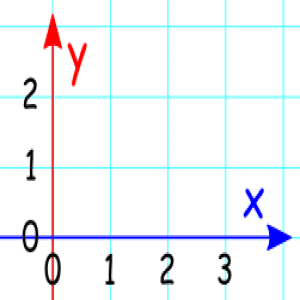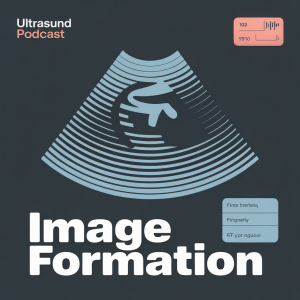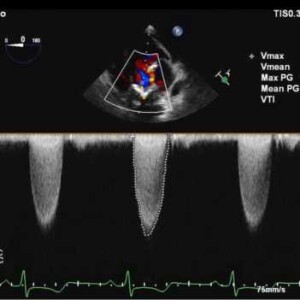
EchoMasters blends the art of sonography with engaging songs and concise lectures.The podcast explores ultrasound physics, scanning techniques, instrumentation and patient care through original music and accessible explanations. Whether you're preparing for an exam or refreshing your skills, EchoMasters delivers high-quality, bite-sized insights to help you master ultrasound.
Episodes

Monday Oct 13, 2025

Monday Oct 13, 2025

Monday Oct 13, 2025

Monday Oct 13, 2025

Friday Oct 10, 2025

Wednesday Oct 08, 2025

Wednesday Sep 24, 2025

Tuesday Sep 23, 2025

Monday Sep 22, 2025

Sunday Sep 14, 2025

Sunday Sep 14, 2025

Sunday Sep 14, 2025

Tuesday Sep 09, 2025

Sunday Sep 07, 2025

Sunday Sep 07, 2025

Saturday Sep 06, 2025

Saturday Sep 06, 2025

Tuesday Sep 02, 2025

Monday Sep 01, 2025

Monday Aug 25, 2025

Saturday Aug 16, 2025

Saturday Aug 16, 2025

Saturday Aug 16, 2025

Saturday Aug 16, 2025

Saturday Aug 16, 2025

Saturday Aug 16, 2025

Saturday Aug 16, 2025

Saturday Aug 16, 2025

Saturday Aug 16, 2025

Saturday Aug 16, 2025

Saturday Aug 16, 2025
Saturday Aug 16, 2025

Saturday Aug 16, 2025
Thursday Aug 14, 2025

Thursday Aug 14, 2025
Act 4, Scene 1: "Transducer Tango" (Transducers and System Controls)
Thursday Aug 14, 2025
Thursday Aug 14, 2025

Thursday Aug 14, 2025

Thursday Aug 14, 2025

Wednesday Aug 13, 2025

Tuesday Aug 12, 2025

Saturday Aug 09, 2025

Friday Aug 08, 2025

Friday Aug 08, 2025

Friday Jul 25, 2025

Monday Jul 07, 2025

Monday Jul 07, 2025

Monday Jul 07, 2025

Monday Jul 07, 2025

Monday Jul 07, 2025

Monday Jul 07, 2025
Read Zoom, Write Zoom, Dynamic Range, Common Artifacts and More!
Monday Jul 07, 2025
Monday Jul 07, 2025

Sunday Jul 06, 2025
Sunday Jul 06, 2025

Sunday Jul 06, 2025
What is the Reynolds Number?
Sunday Jul 06, 2025
Sunday Jul 06, 2025
Question: What is the Reynolds number?
Answer: The Reynolds number is a dimensionless number that predicts whether flow is laminar or turbulent . A Reynolds number above 2,000 indicates turbulent flow

Wednesday Jun 18, 2025

Tuesday Jun 03, 2025

Tuesday Jun 03, 2025

Tuesday Jun 03, 2025
Intensity
Tuesday Jun 03, 2025
Tuesday Jun 03, 2025
Intensity is a crucial concept in ultrasound physics, particularly for understanding image quality and patient safety.
Here's what you need to know about intensity:
- Definition and Units: Intensity describes the energy density within a sound beam. Its units are watts per square centimeter (W/cm²).
- Calculation: Intensity is calculated as beam power divided by the cross-sectional area.
- Intensity (W/cm²) = Power (W) / Beam Area (cm²).
- Determinants and Adjustability: Intensity depends on the source specifications and can be adjusted by the operator.
- Behavior in Tissue: As sound propagates through tissue, both intensity and power diminish. This reduction in intensity is part of the overall attenuation of the sound wave.
- Safety and Bioeffects: Intensity is a key metric for evaluating safety and bioeffects. Standard imaging intensities in ultrasound are generally considered safe, with no known bioeffects. However, ultrasound can potentially cause thermal and mechanical effects, and the thermal effect arises from temperature increases due to ultrasound waves being absorbed by biological tissues.
- Relationship with Duty Factor: The duty factor represents the proportion of time a pulse is actively propagating and is important for quantifying intensities. Clinical duty factors are typically low (0.001-0.01), as listening intervals dominate to permit echo reception. Low duty cycles, combined with short pulse lengths, ensure that only one pulse traverses the imaging plane at a time, localizing energy deposition spatially and temporally, which helps improve safety. Understanding duty factor principles aids in evaluating potential bioeffects.
- Relationship to Output Power and Image Brightness: Transducer output (also known as acoustic power, pulser power, or transmitter output) directly influences the brightness level across the entire ultrasound image and is regulated by the excitation voltage from the pulser. Adjusting transducer output upwards can improve the signal-to-noise ratio, enhancing image clarity. However, increasing transducer output also increases patient exposure to ultrasound. The ALARA (As Low As Reasonably Achievable) Principle guides these adjustments, prioritizing minimizing patient exposure by first adjusting receiver gain to optimize image brightness before increasing output power.
Monday Jun 02, 2025
Specular Reflection
Monday Jun 02, 2025
Monday Jun 02, 2025
Specular reflection is a fundamental phenomenon in ultrasound imaging that you need to understand:
- Definition: Specular reflection occurs when ultrasound energy strikes a very smooth surface and bounces back to the transducer, similar to how light reflects off a mirror. This bouncing back of sound energy is critical for creating the image displayed on the ultrasound monitor.
- Conditions for Occurrence: This type of reflection is most pronounced when the wavelength of the sound wave is considerably smaller than the irregularities of the reflecting boundary.
- Importance of Angle: The visibility of specular reflectors heavily depends on the angle at which the ultrasound wave strikes the reflector, known as the angle of incidence. Specular reflectors are most clearly visible when the ultrasound wave hits the reflector perpendicularly (at a 90° angle). If the angle deviates from this perpendicular incidence, the visibility of these reflectors significantly diminishes because the reflected sound waves are not directed back towards the transducer.
- Contrast with Non-Specular/Diffuse Reflection: Unlike specular reflection, which involves organized reflection from smooth surfaces, non-specular or diffuse reflection occurs when sound waves strike rough or irregular surfaces, causing the reflected sound to scatter in various directions. Diffuse reflection provides a more detailed and textured image of internal structures, especially those with uneven surfaces, as it involves the scattering of sound waves in multiple, random directions.

Monday Jun 02, 2025
Artifacts
Monday Jun 02, 2025
Monday Jun 02, 2025
In ultrasound imaging, artifacts are important to understand as they can affect the accuracy of diagnosis and treatment.
Here's what you need to know about artifacts:
- Definition and Types: Artifacts are distortions or inaccuracies in the ultrasound image. Common types of artifacts include:
- Reverberation
- Shadowing
- Refraction artifacts
- Importance of Recognition and Correction: It is crucial to recognize and correct these artifacts to ensure accurate diagnosis and treatment.
- Doppler Artifacts: These are a specific type of artifact related to Doppler ultrasound.
- Cause: Doppler systems transform frequency shifts, usually from moving red blood cells, into colors and spectra. However, low-velocity motion, such as pulsating vessel walls, can create minor Doppler shifts that appear as artifacts.
- Examples: Common Doppler artifacts include color flash or ghosting.
- Correction/Mitigation:
- Wall filters (high-pass filters) are used to help eliminate these low-magnitude shifts, thereby reducing artifacts like color flash or ghosting.
- It is important to note that simply reducing color Doppler gain will not fix ghosting artifacts because it removes reflections from tissues before it removes reflections from blood cells.
Monday Jun 02, 2025
Duty Factor
Monday Jun 02, 2025
Monday Jun 02, 2025
The duty factor is a significant parameter in ultrasound imaging, particularly concerning the characteristics of the emitted pulse and patient safety.
Here's what you need to know about duty factor:
- Definition: The duty factor represents the proportion or percentage of time that an ultrasound pulse is actively propagating. It can be expressed as a percentage or a fraction ranging from 0% to 100%.
- Continuous Wave vs. Pulsed Operation: A 100% continuous duty cycle corresponds to continuous wave emission, while 0% defines a quiescent system. However, imaging inherently utilizes pulsed ultrasound with fractional duty factors below 100%, typically around 0.01 or less clinically.
- Typical Clinical Values: Clinical duty factors typically range from 0.001 to 0.01. This means that the system is listening for echoes for most of the time, allowing for echo reception from depths up to 30 cm.
- Determinants and Adjustability: The duty factor depends on adjustable timing circuit parameters and is determined by the sound source. While it's primarily source-dependent, the sonographer's adjustments to imaging depth can indirectly change the duty factor, influencing image quality and depth.
- Relationship to Safety: Low duty cycles, combined with short pulse lengths, are crucial for safety. This pulsing approach ensures that only one pulse traverses the imaging plane at a time, localizing energy deposition spatially and temporally, thereby improving safety. Understanding duty factor principles helps in evaluating potential bioeffects.
- Impact on Intensity: The duty factor is important for quantifying intensities.

Monday Jun 02, 2025

Monday Jun 02, 2025

Tuesday Feb 18, 2025

Monday Feb 17, 2025

Thursday Feb 13, 2025

Wednesday Feb 12, 2025

Tuesday Feb 11, 2025

Tuesday Feb 04, 2025
Exploring the Different Types of Doppler Ultrasound
Tuesday Feb 04, 2025
Tuesday Feb 04, 2025
In this episode, we delve into the fascinating world of Doppler ultrasound, focusing on the different types available today. Our discussion primarily highlights Pulsed Wave Doppler, a technique known for its range resolution capabilities. We explore its unique features and applications in the medical field, making complex concepts easy to understand.

Saturday Feb 01, 2025
The Hidden Challenges and Rewards of a Career in Sonography
Saturday Feb 01, 2025
Saturday Feb 01, 2025



